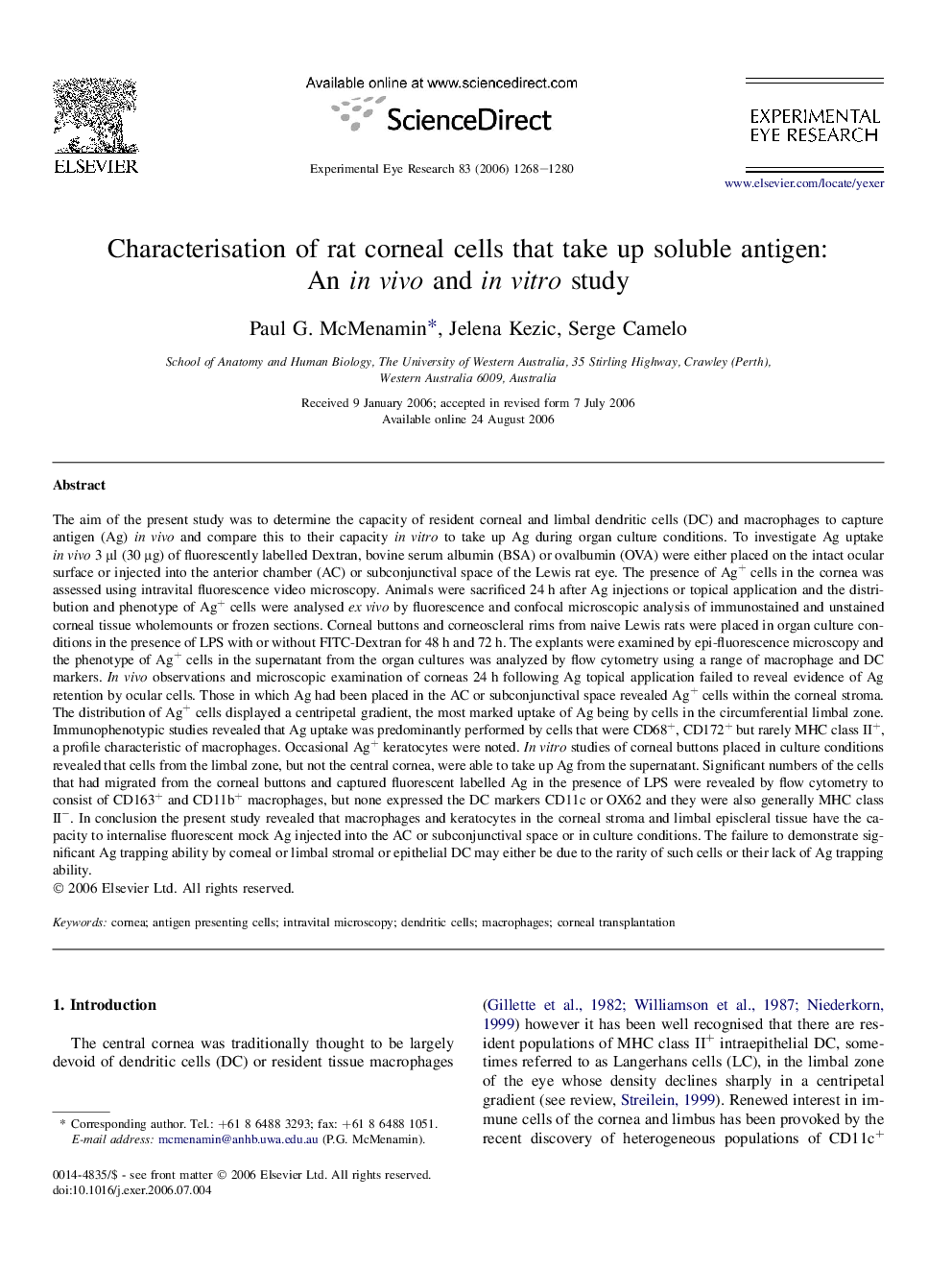| کد مقاله | کد نشریه | سال انتشار | مقاله انگلیسی | نسخه تمام متن |
|---|---|---|---|---|
| 4012987 | 1261225 | 2006 | 13 صفحه PDF | دانلود رایگان |

The aim of the present study was to determine the capacity of resident corneal and limbal dendritic cells (DC) and macrophages to capture antigen (Ag) in vivo and compare this to their capacity in vitro to take up Ag during organ culture conditions. To investigate Ag uptake in vivo 3 μl (30 μg) of fluorescently labelled Dextran, bovine serum albumin (BSA) or ovalbumin (OVA) were either placed on the intact ocular surface or injected into the anterior chamber (AC) or subconjunctival space of the Lewis rat eye. The presence of Ag+ cells in the cornea was assessed using intravital fluorescence video microscopy. Animals were sacrificed 24 h after Ag injections or topical application and the distribution and phenotype of Ag+ cells were analysed ex vivo by fluorescence and confocal microscopic analysis of immunostained and unstained corneal tissue wholemounts or frozen sections. Corneal buttons and corneoscleral rims from naive Lewis rats were placed in organ culture conditions in the presence of LPS with or without FITC-Dextran for 48 h and 72 h. The explants were examined by epi-fluorescence microscopy and the phenotype of Ag+ cells in the supernatant from the organ cultures was analyzed by flow cytometry using a range of macrophage and DC markers. In vivo observations and microscopic examination of corneas 24 h following Ag topical application failed to reveal evidence of Ag retention by ocular cells. Those in which Ag had been placed in the AC or subconjunctival space revealed Ag+ cells within the corneal stroma. The distribution of Ag+ cells displayed a centripetal gradient, the most marked uptake of Ag being by cells in the circumferential limbal zone. Immunophenotypic studies revealed that Ag uptake was predominantly performed by cells that were CD68+, CD172+ but rarely MHC class II+, a profile characteristic of macrophages. Occasional Ag+ keratocytes were noted. In vitro studies of corneal buttons placed in culture conditions revealed that cells from the limbal zone, but not the central cornea, were able to take up Ag from the supernatant. Significant numbers of the cells that had migrated from the corneal buttons and captured fluorescent labelled Ag in the presence of LPS were revealed by flow cytometry to consist of CD163+ and CD11b+ macrophages, but none expressed the DC markers CD11c or OX62 and they were also generally MHC class II−. In conclusion the present study revealed that macrophages and keratocytes in the corneal stroma and limbal episcleral tissue have the capacity to internalise fluorescent mock Ag injected into the AC or subconjunctival space or in culture conditions. The failure to demonstrate significant Ag trapping ability by corneal or limbal stromal or epithelial DC may either be due to the rarity of such cells or their lack of Ag trapping ability.
Journal: Experimental Eye Research - Volume 83, Issue 5, November 2006, Pages 1268–1280